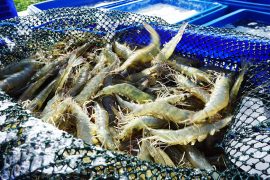
Monarch butterflies with more white spots are more likely to survive their migration journey
For everyone who has been fascinated by the patterned elegance of monarch butterflies, researchers from the University of Georgia may have unraveled the secret behind the creature’s iconic white spots.
This fascinating discovery comes from a new study that investigates how these humble butterflies accomplish an incredible feat. Every year, they migrate thousands of miles to their wintering homes.
The study has proposed a surprising theory. The monarch butterflies boasting more white spots seem to be more proficient at successfully completing this long-distance journey.
The exact function of these spots remains elusive. However, it is postulated that they may be altering the airflow around the butterfly’s wings.
Lead author Andy Davis, an assistant researcher from UGA’s Odum School of Ecology, reflected on the team’s initial expectations.
What the researchers learned about monarch butterflies
“We undertook this project to learn how such a small animal can make such a successful long-distance flight,” he said.
“We actually went into this thinking that monarchs with more dark wings would be more successful at migrating because dark surfaces can improve flight efficiency. But we found the opposite.”
The team’s findings pointed to an intriguing reality. Monarchs with less black on their wings and a higher number of white spots were the true long-distance champions. They successfully reached their winter destination nearly 3,000 miles away in south and central Mexico.
“It’s the white spots that seem to be the difference maker,” Davis noted.
How the study was conducted
The researchers scrutinized almost 400 wild monarch wings at different points in their journey. They carefully measured the proportions of their colors. Their results showed that the migrating monarchs who reached their destination had about 3% less black and 3% more white on their wings.
This exciting research also led them to explore museum specimens of monarchs and six other butterfly species. They found that monarchs boasted significantly larger white spots than their non-migratory counterparts.
“The amount of solar energy monarchs are receiving along their journey is extreme, especially since they fly with their wings spread open most of the time,” Davis said. “After making this migration for thousands of years, they figured out a way to capitalize on that solar energy to improve their aerial efficiency.”
Monarch butterflies are now under threat from climate change
However, this valuable adaptation may come under threat due to our changing climate. The rising global temperatures and altered solar radiation could negatively affect the aerial efficiency of these butterflies.
This would force them to adapt once again, warned Mostafa Hassanalian. Mostafa is the co-author of the study and an associate professor at the New Mexico Institute of Mining and Technology.
Despite these challenges, there may still be hope for these beautiful creatures. Davis’ previous research showed that the summer populations of monarchs have remained relatively stable over the past 25 years.
This suggests that population growth during summer might offset the losses incurred during migration, winter weather, and other environmental changes.
“This study allows us to further understand how monarchs are successful in reaching their destination,” Davis said, indicating that more research and understanding could potentially help the species in their annual journey.
This ground-breaking study, published in PLOS ONE, included contributions from Christina Vu, from UGA’s Odum School of Ecology, and Paola A. Barriga, from UGA’s Department of Plant Biology, as well as Brenden Herkenhoff, from New Mexico Tech.
More about monarch butterflies
Monarch butterflies are one of the most recognized and studied butterflies in the world, thanks to their distinctive appearance and extraordinary life cycle and migration pattern.
Appearance
Monarchs are known for their striking orange and black patterned wings. Adult butterflies have black bodies, orange wings with black veins, and a black border filled with white spots. Males can be differentiated from females by the two black spots on their hindwings, which are scent glands used during mating.
Life Cycle
Monarch butterflies go through four stages in their life cycle: egg, larva (caterpillar), pupa (chrysalis), and adult. The entire process takes about a month, varying depending on the temperature and humidity.
Diet
As caterpillars, monarchs feed exclusively on the leaves of milkweed plants. This diet makes the caterpillars and the resulting adult butterflies toxic to predators. Adult monarchs feed on the nectar of various flowers, which provides them with the energy they need to fly, mate, and migrate.
Migration
Monarch butterflies are known for their epic annual migration. Every fall, millions of monarchs from Canada and the United States journey up to 3,000 miles to their wintering sites in the mountainous fir forests of central Mexico, a journey that can take up to two months.
In the spring, they return north in a multigenerational journey – the butterflies that return are the grandchildren or great-grandchildren of those that migrated the previous fall.
Threats
Monarch butterflies face various threats that have led to a decline in their population in recent years. Habitat loss, particularly the loss of milkweed plants due to agricultural practices and urbanization, is a significant threat. Pesticides and climate change, which can disrupt their migration and breeding patterns, are also major concerns.
Conservation
Efforts to conserve monarch butterflies focus on preserving their habitat, especially milkweed plantings, and reducing pesticide use. These actions aim to ensure that future generations of monarch butterflies can continue their incredible life cycle and migration.
There is still much to learn about monarch butterflies. Scientists continue to study their behaviors, genetics, and migratory patterns to understand how to best protect and conserve these beautiful creatures.













